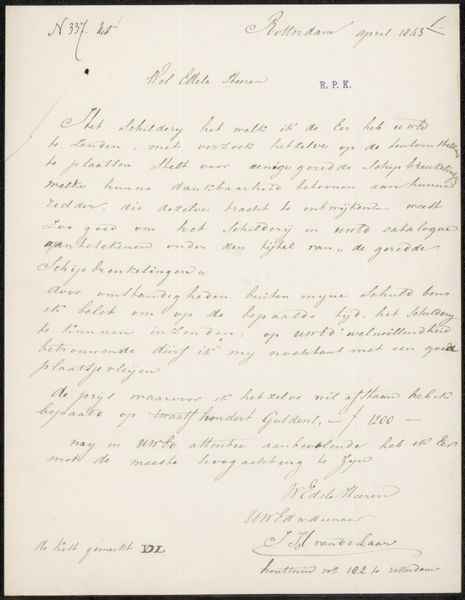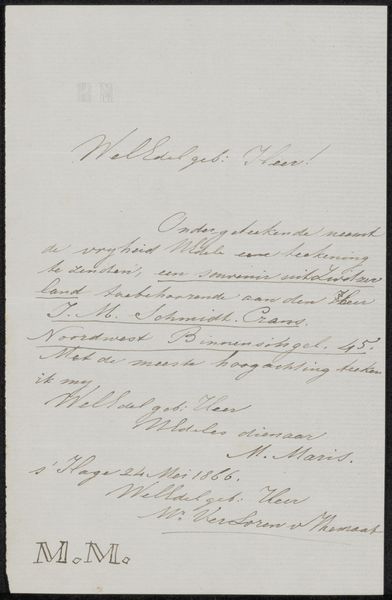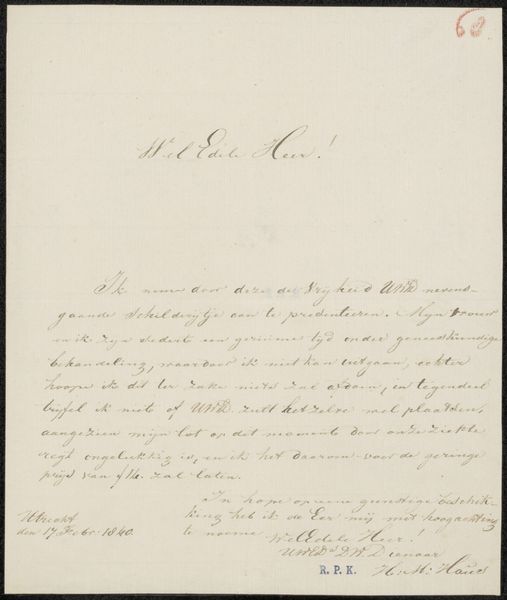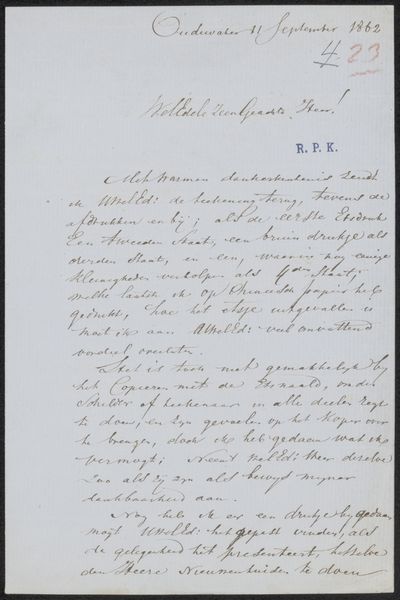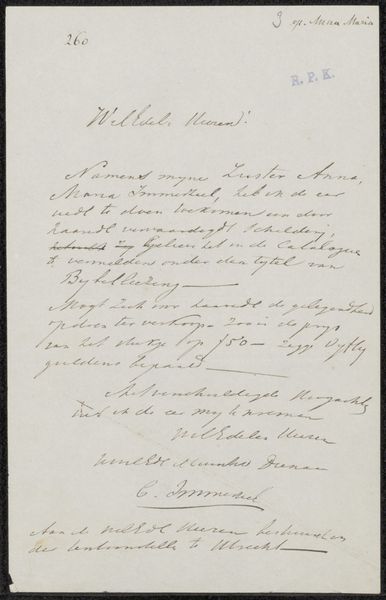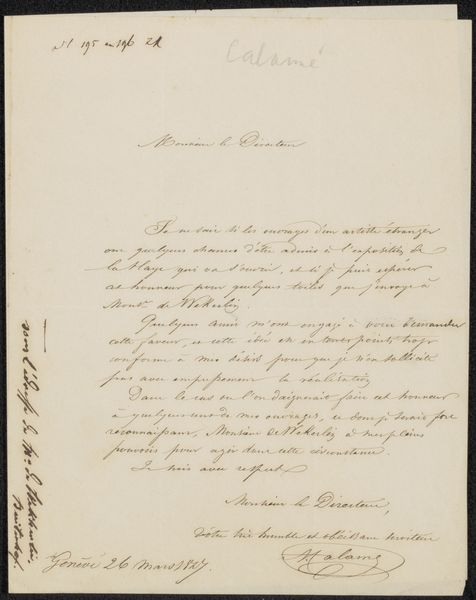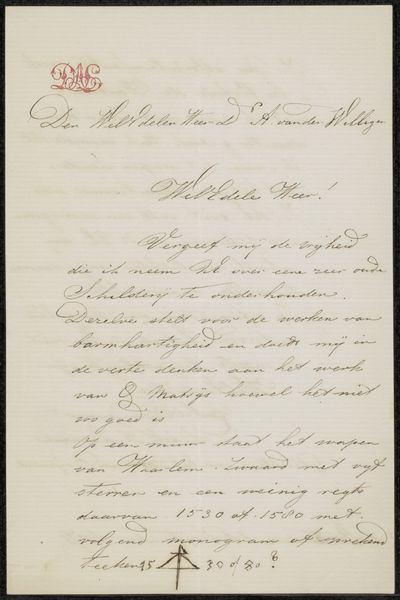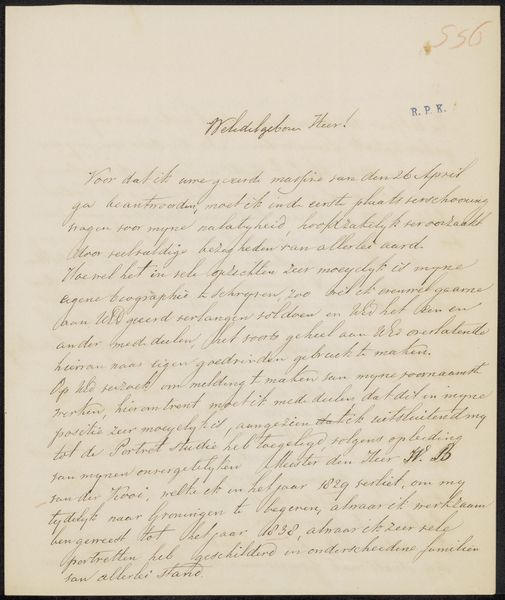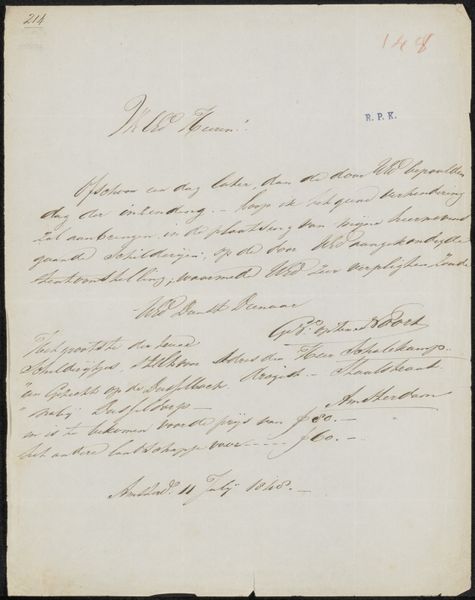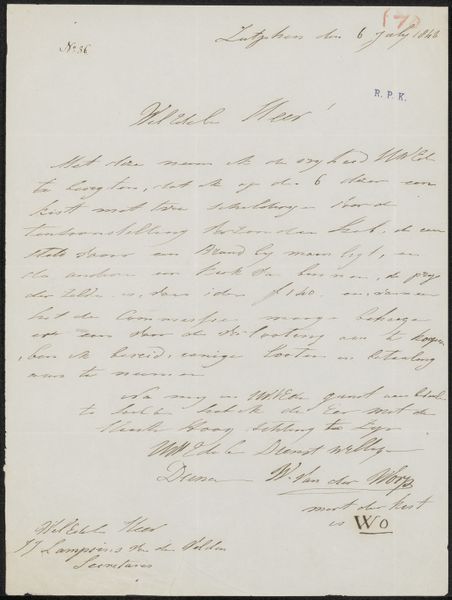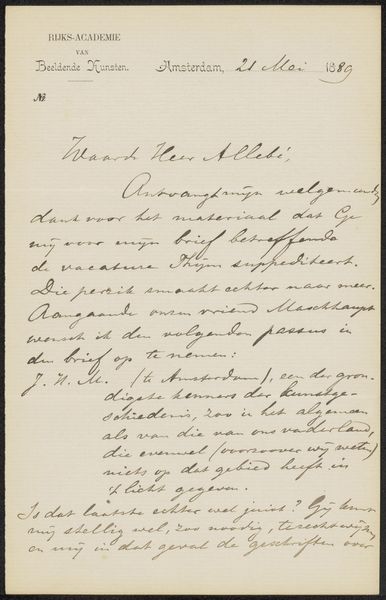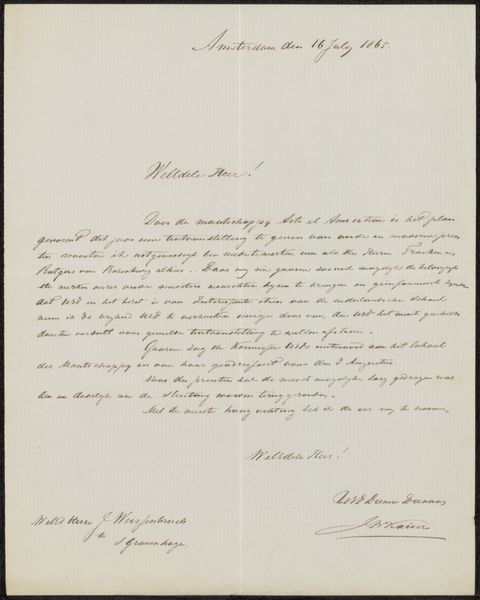
drawing, paper, ink, pen
#
portrait
#
drawing
#
paper
#
ink
#
pen
#
modernism
#
calligraphy
Copyright: Rijks Museum: Open Domain
Editor: This is "Brief aan Frans Buffa en Zonen," or "Letter to Frans Buffa and Sons," possibly from 1875, created by Ida van Lokhorst using pen and ink on paper. It's interesting because, at first glance, it just looks like a standard letter, but the composition has a deliberate quality. What do you see in this piece? Curator: I see more than just a simple letter; I see a deliberate act of communication that also functions as a potent commentary on the societal constraints placed upon women in the 19th century. Look closely at the handwriting; its very existence is a testament to Van Lokhorst's literacy and education, attainments often denied to women of that era. Editor: That’s an interesting point, I hadn't considered the act of writing itself. Curator: Consider it in context: letter writing was a primary mode of intellectual and social exchange, and thus, a means to participate in a world often controlled by men. By engaging in this practice, Van Lokhorst subtly subverts those patriarchal structures. Editor: So, the letter isn't just about the words but also about asserting herself through the written word? Curator: Precisely! Furthermore, this particular letter's recipient - Frans Buffa and Sons - were art dealers, indicating Van Lokhorst's engagement with the art world. Could this have been a submission, a request, or perhaps even a critique? What position was she seeking to inhabit through it? Editor: It adds a whole new dimension to how I see it. Initially, I was focusing on the aesthetic qualities, but the social context you’ve described is really revealing. Curator: Art like this invites us to look beyond the surface and consider the power dynamics at play. To see the invisible labor and struggles embedded within. Editor: Thank you. Now, when I look at it, it embodies a quiet defiance through participation and discourse.
Comments
No comments
Be the first to comment and join the conversation on the ultimate creative platform.
